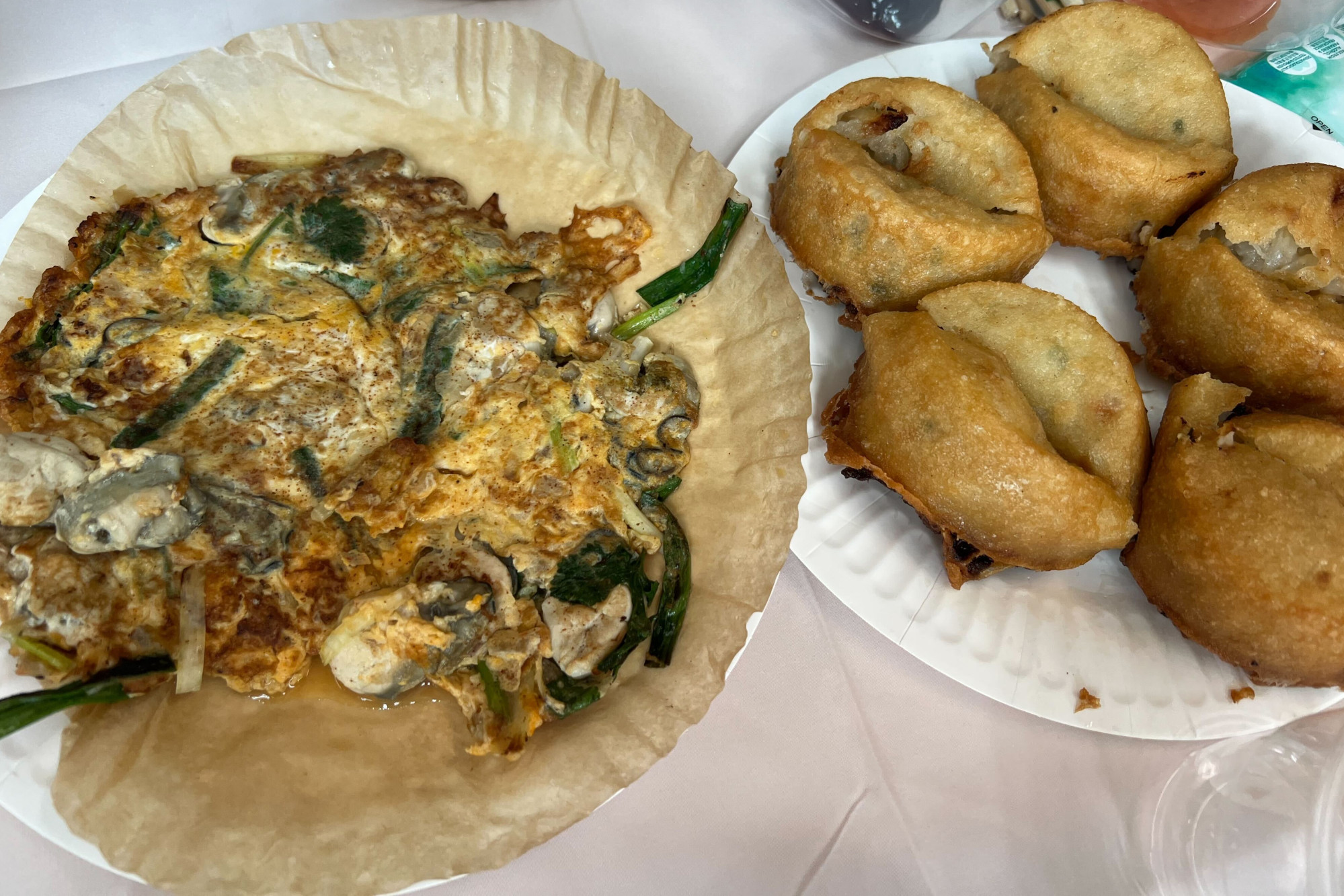
Expanded group tour quota already filled for Hong Kong border town on weekends, public holidays next month, security minister says
- Secretary for Security Chris Tang says daily quota of 700 people on group tours to Sha Tau Kok mostly exhausted for January, with second phase of opening to begin
- Authorities hope to turn sleepy Hakka village into cultural and eco-tourism hub while aiming to ‘strike a balance’ between daily lives of residents and development
An expanded group tour quota has already been exhausted for people heading to soak up the atmosphere of a Hong Kong border town on public holidays and weekends next month, with only some individual spots left, the security minister has said.
Secretary for Security Chris Tang Ping-keung on Saturday said the daily quota of 700 people on group tours to Sha Tau Kok had been filled for those days, with the second phase of the opening of the historic settlement set to begin on January 1.
Leading a press tour to the area, the minister promised to minimise disruptions to the daily lives of about 5,000 local residents while developing cultural and eco-tourism.

“We aim to strike a balance between their daily lives and tourism development,” he said.
In his policy address in October, Chief Executive John Lee Ka-chiu proposed developing the sleepy seaside Hakka village into a hub for cultural and eco-tourism.
At present, only tour groups are allowed to visit the border town and are subject to a maximum of 500 people a day.

From January 1, up to 700 people on group tours will be allowed to visit, while another 300 spots will be allocated to individual visitors, under the plan for the area that authorities have called the Sha Tau Kok Cultural Tourism Zone.
According to the Travel Industry Council, all of the 114 group tours for weekends and public holidays in January were allocated to travel agents, and spots under the individual visitor quota remained available for both weekends and weekdays.
Hong Kong tourists may get more access to once restricted border town: minister
Individuals and groups have to register with police to access the area.
The expanded quota marks the second phase of the opening of Sha Tau Kok after Hong Kong authorities granted tour agencies limited access in a pilot scheme in June last year to promote eco-tourism.
Before the scheme became effective, residents needed a special permit to visit the border town.

Sha Tau Kok is one of the last remaining settlements in the Frontier Closed Area, a regulated zone first established in 1951 to prevent illegal immigrants from crossing the border.
But authorities had no plans in the near future to open Chung Ying Street, which lies between the border of Hong Kong and Shenzhen, due to concerns over smuggling and security, Tang said.
Among about 20 key attractions, Tang highly recommended three spots that were ideal for taking selfies.

His top picks were the Sha Tau Kok pier, a tiny shelter next to it and the nostalgic San Lau Street.
“The white Cantonese verandah-style shophouses on San Lau Street are among very few of their kind remaining in Hong Kong,” Tang said.
Some local residents plan to bet on tourism developing in the village.
Zoe Su, a 30-year-old local resident and housewife, said she set up a street-side souvenir shop which would open on January 1.
“We will offer tote bags, photographs and accessories based on local Sha Tau Kok landmarks and culture,” she said.
Hong Kong tourists may get more access to once restricted border town: minister
On the tour, Tang met elderly Hakka women performing their historic dragon boat dances and making traditional snacks.
He also recommended local delicacies such as stewed pork with black beans in the Hakka style, deep-fried turnip cake and steamed squid cake.
He pointed to a decades-old post office and a former fire station.
Among the signature architecture is the town’s public housing estate, which has 51 blocks in a pastel colour facade, all of which are made up of low-rise buildings with only four to five storeys each.

The Sha Tau Kok pier, measuring 280 metres in length, is a landmark in its own right as the city’s longest.
The landing is also decorated with colourful paintings reflecting the culture and history of the village, largely produced by local primary school pupils and elderly residents.
The pier allows quicker access to the 300-year-old Hakka village of Lai Chi Wo, with visitors able to reach the area in half an hour. In the past, the walled settlement could only be reached via Ma Liu Shui Public Pier in Sha Tin, a journey that takes up to 1½ hours.
Tang said the Sha Tau Kok tourism project showed the combined efforts of the departments of leisure and cultural services, architectural services, transportation, highways, drainage, police, fire services and the tourism board.

